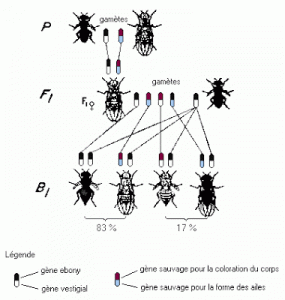In the framework of my works at Muséum National d’Histoire Naturelle de Paris (MNHN), I was lucky enough to obtain funding to carry out a research mission on the site of Smithsonian Tropical Research Institute (STRI) in Gamboa, Panama.
Works some of my results have been published in the journal Nature/Heredity (25 March 2015) ici.
caption id=”attachment_355″ align=”alignright” width=”236″] Geographic location of Gamboa, and the STRI search station (Google Earth)[/caption]
Geographic location of Gamboa, and the STRI search station (Google Earth)[/caption]
Site presentation :
Gamboa is a village located on the banks of the Panama Canal, at the tributary of the Chagres River that feeds Lake Gatun (see album). It is located 25km west of the capital, near the nature reserves of “Soberania” and “Camino de Cruces”. Its geographical location and protected environment make it an exceptional site for study, observation of biodiversity.
The research site is composed of butterfly greenhouses intended for their breeding for scientific purposes. The interest is to preserve stocks of butterflies of different species and their associated hosts so that scientists can have sufficient biological material, known and controlled, to conduct studies in genetics, behaviour, ecology, etc.
Mission Objective:
My mission of 6 months had for objective the breeding and the crossing of 2 different forms of Heliconius hecale, coming from 2 different geographical regions.
- Heliconius hecale zuleika : border with Colombia, harvested in the “Bocas del Toro” region, eastern Panama.
- Heliconius hecale melicerta : central and western Panama, harvested from the Gamboa site.

In order to constitute our breeding populations, not present on the site of the STRI, we stayed (Mathieu JORON and me) a few days in the region of Bocas del Toro in order to collect adult individuals, male and female, of the form zuleika. It was also necessary to collect on the Gamboa site individuals of the form melicerta.
Each species of Heliconius feeds only on specific plant species of the Passionflower family. H. hecale is species-specific Passiflora vitifolia. In order to be able to feed the caterpillars, I had to set up a culture of this species from cutting, in sufficient quantity to allow the feeding of hundreds of caterpillars.
For more information on Heliconius : see sheet on Heliconius
Read the article published in the journal Insects : ici
The objective was to cross of type “Back-cross” (known as Mendelian) between individuals of the 2 forms.
obtaining crossbred/hybrid individuals in this way is then used to make genetic comparisons at the level of gene structure and nature. These comparative studies reveal and highlight the genes responsible for colouring, their interactions and the way in which they are selected by evolutionary pressures.
Works some of my results have been published in the journal Nature/Heredity (25 March 2015) ici.
Breeding techniques of the species Heliconius hecale :
[wppa type=”cover” album=”4″][/wppa]Recommendation of books on this theme:
– Panama


